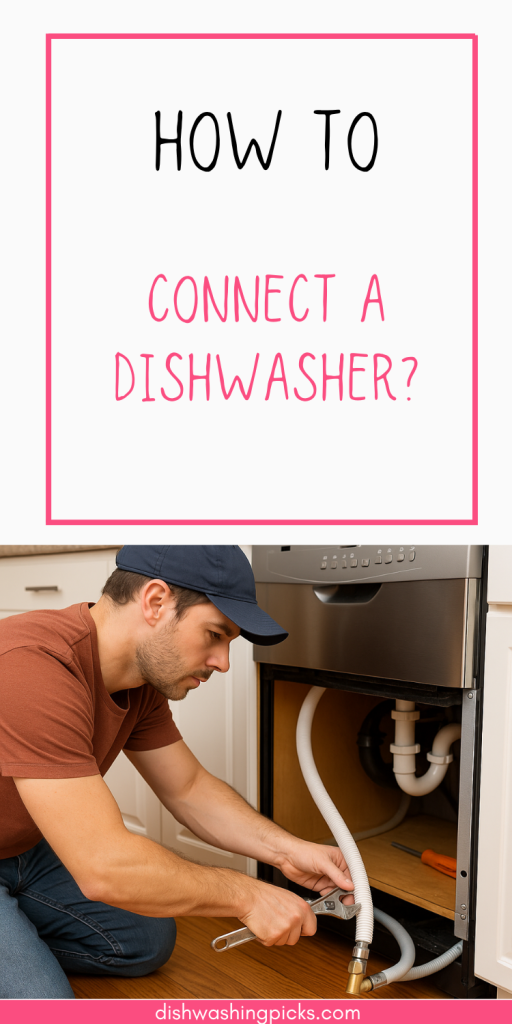
(Spoiler: It’s Not Rocket Science, Promise)
Alright, so you just got a shiny new dishwasher—or maybe it’s a secondhand one, but hey, it still does the job. Either way, it’s sitting there in your kitchen, looking all smug and disconnected, and you’re like… “Okay, now what?”
If you’re imagining a bunch of complicated pipes, mystery wires, and maybe a few curse words in your future—don’t worry. You don’t need to be a plumber or some tool-belt-wearing superhero to hook this thing up.
Let’s break it down together. Like, really break it down.
First Thing’s First: Do You Even Need to Do This?
Before you start yanking appliances around—
Ask yourself: Is this a job I can handle?
If you’re comfortable with a little DIY and can tell a wrench from a spatula, you’re good.
If the idea of touching a water valve makes you break into a sweat… maybe phone a friend (or a pro).
But if you’re still here, I’m guessing you’re ready to dive in—let’s go!
Tools You’ll Need (AKA: Your New Besties)
Let’s keep it real—this isn’t some massive tool-haul project. You just need a few essentials:
- Adjustable wrench
- Screwdriver (usually Phillips)
- Teflon tape (plumber’s tape, if you wanna sound fancy)
- Dishwasher installation kit (usually comes with hose + fittings)
- Bucket or towel (because: water)
Got all that? Awesome. Let’s move.
Step 1: Power Off, Water Off — Safety First
Don’t skip this. Seriously.
Unplug the dishwasher (or turn off the circuit if it’s hardwired).
Shut off the water supply under the sink.
This isn’t just for safety—it’s to avoid surprises like, y’know, mini kitchen floods.
Imagine starting strong and ending with a mop in your hand. Nah. Let’s not.
Step 2: Find the Hookups — It’s All Under the Sink
Most dishwashers connect right next to your kitchen sink, which makes sense.
Why? Water, drain, power—it’s all right there.
Peek under your sink and look for three things:
- Water supply valve
- Drain connection
- Electrical access (usually in the cabinet next to the dishwasher)
If all that’s there, you’re golden. Let’s plug this baby in.
Step 3: Connect the Water Line (AKA: Don’t Cross the Streams)
Take the water inlet hose from your dishwasher and connect it to the hot water supply valve under the sink.
Use the Teflon tape on threads—trust me, it helps prevent leaks.
Tighten it, but not like you’re trying to prove your strength. Just firm.
You want it snug, not stripped.
Step 4: Drain Hose Time
This part is weirdly satisfying.
Take the dishwasher’s drain hose and connect it to the sink drain or garbage disposal—whichever one you have.
Usually, there’s a little inlet pipe for it (if you have a disposal, you might need to knock out a plug inside the inlet—use a screwdriver and a gentle tap, not a sledgehammer, please).
Secure it with a clamp or zip tie.
No one wants a rogue hose spraying the inside of your cabinet.
Step 5: Electrical Connection – Plug or Hardwire?
Option A: Your dishwasher has a regular plug.
Easy. Just plug it into a nearby outlet (behind the dishwasher or in the cabinet next to it). Done.
Option B: It’s hardwired.
This sounds scarier than it is. You’ll need to:
- Access the junction box (usually at the front-bottom of the dishwasher)
- Match wire colors: black to black, white to white, ground to ground
- Secure with wire nuts
- Close it up like a pro
If this part makes you nervous, totally okay to call an electrician.
Step 6: Slide It In (Cue the Awkward Shuffling)
Before you slide the dishwasher into its space, double-check:
- All connections are secure
- Hoses and cords aren’t kinked or caught
- Everything is positioned neatly
Then, slowly push it back under the counter. Wiggle it gently. No need to body slam it in.
Step 7: Test Run, Baby
Now the moment of truth:
- Turn the water supply back on
- Power it up
- Run a quick cycle (no dishes, just vibes)
Check under the sink for leaks. Peek around. Listen for weird noises.
If all’s quiet and dry—congrats! You’ve officially connected your dishwasher like a boss.
Final Thoughts (aka Dishwasher Wisdom 101)
You just saved yourself a solid chunk of cash by skipping the installation fee—and you learned a little about your kitchen’s plumbing in the process. Not bad, right?
And hey, next time someone complains the dishwasher’s not working, you can smugly say, “Well, I connected it, didn’t I?”
Mic drop.
Still feeling unsure? Bookmark this.
Or better yet, send it to a friend who always calls you for help.
Sharing is caring—and dishwashers deserve a proper setup too.
